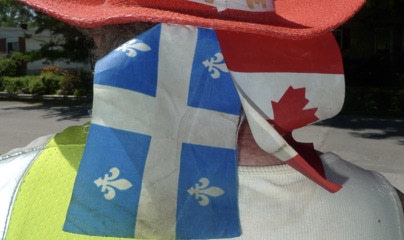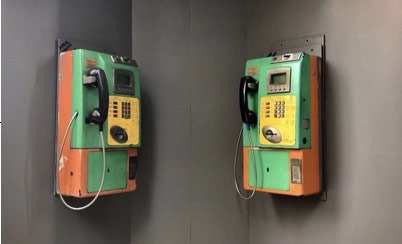Jim Coffey of Esprit Rafting: Nuclear concerns

Jim Coffey is owner-operator of Esprit Rafting in Davidson, near Fort Coulonge, which he founded in 1992. In October 2007, Esprit was recognized by National Geographic Adventure as the World’s #1 Whitewater Operation and second overall of all Eco-Adventure Tour Companies worldwide. In 2008, Coffey joined “Climate Project Canada”, where Al Gore and David Suzuki trained participants on giving presentations on Global Warming and Climate Change.
Recently, historic flooding of the Ottawa River has inundated properties and, now that waters are receding, people must test well water for contaminants.
Balanced against this immediate threat to water safety is Canadian Nuclear Laboratories’ (CNL’s) proposal to build a Near Surface Disposal Facility (NSDF) for long-term storage of nuclear waste in Chalk River, on Crown Land adjacent to the Ottawa River.
Should we be concerned about a nuclear waste disposal site built on a seismologically unstable piece of land close to a river?
I asked Jim Coffey for his thoughts about CNL’s plans.
KF: What were your initial thoughts about CNL’s proposal?
JC: I am no scientist but I’m an engaged citizen who enjoys swimming, paddling, and fishing in the Ottawa River – and I drink its water. I suspect like most river users, my initial reaction was “I can’t imagine that this is a good idea so close to the river.”
KF: Did the public consultation session given by CNL in Sheenboro about the NSDF address your concerns?
JC: I like to make informed decisions after seriously weighing options/alternatives. No one convinced me this site’s location is a good idea nor did I find it conclusive that it is risk-free.
KF: Many, including Ottawa Riverkeeper, accept that CNL is being responsible in wanting to clean up, stabilize and contain their contaminated site. Balanced against this hope, do you think the proposed containment cell is safe not only for “on-site radioactive waste”, but also for radionuclides from across Canada?
JC: I understand that there’s a considerable amount of hazardous material sitting in “temporary storage” in Chalk River. Plus, many buildings will be demolished due to contamination. I also acknowledge that many of their scientists are some of the smartest and brightest in their field.
Many representatives at the Sheenboro Consultation Session explained we need this site because “Fifty years ago… we didn’t know what we know now… we have contaminated stuff we must do something with...”
However, fifty years from now will the best and brightest be saying the same thing [about this solution]? I believe there is no necessity to locate this site so close to the Ottawa River.
KF: What are your top three concerns about the proposed NSDF?
JC: Proximity to the Ottawa River x 3
2. Ten per cent of the site is for “imported” waste. But when you do the math it is 100k cu/m, a considerable amount of waste from Quebec, Manitoba and Ontario. Although I was “assured” nuclear materials are commonly transported safely by road, it certainly raises a red flag to me as I assume it would to many ordinary citizens.
3. At the Sheenboro Consultation, CNL’s
presentation boards explained there’d be an analysis concerning what types of materials would be permitted in the NSDF. Unfortunately, their explanations were oversimplified: they didn’t explain anything about that selection process or the safety issues associated with such materials. I assume this will be detailed more in their environmental impact assessment but, in my view, just saying “it will be scrutinized” was dumbed-down too far for me to form an opinion.
KF: What’s the answer to this international, human dilemma regarding nuclear waste?
JC: I understand the dilemma and empathize. Many friends/paddlers work with AECL and I trust their knowledge and professionalism. I believe the talented people employed there can find a solution. It needs to be examined from the perspective of Benefit vs Risk. Most reasonable people see the high benefit of moving old contaminated waste to a more secure permanent storage site. Unfortunately, the chosen site is within 1km of a river that millions of people rely upon to swim, drink, fish and paddle. It’s beyond a NIMBY issue when the extent of accidental contamination has such massive impact on so many people in our watershed: this represents high risk. I believe CNL has both an opportunity and responsibility to reduce risk by choosing a location that has greater natural containment, further afield from a major waterway. Somewhere where the unlikely incident of a breach of contaminants is in a Low Risk location away from the waterway that feeds our nation’s capital (and the citizenry in-between).
On a positive note, it’s very difficult to seriously advocate against something when you are not an expert in that field. It automatically tends to tip the scales in the direction of the experts. Fortunately, Ottawa Riverkeeper headed by Meredith Brown represents an experienced, talented team. I know they’ll be studying and doing the scientific due diligence and assessment of the Environmental Assessment Plan and advocating on behalf of the river and its communities.
Meanwhile, I believe it is CNL’s job to convince concerned citizens that their plan is a good idea rather than the citizenry’s job to convince them that it is a bad one. Until they convince me, I will advocate against the location of their proposed NSDF. I do not believe it is in the public interest to have this site next to the Ottawa River.
KF: Thanks, Jim. It’s my belief that the contamination of the Ottawa River during this flood gives us extreme pause to approve any construction of an NSDF so close to the Ottawa River. I also think it’s appalling that CNL hasn’t produced its studies/analyses in French.
Photo 1: Courtesy of Esprit White Water Rafting
Photo 2: Courtesy of Esprit White Water Rafting
Photo 3: Courtesy of Esprit White Water Rafting








